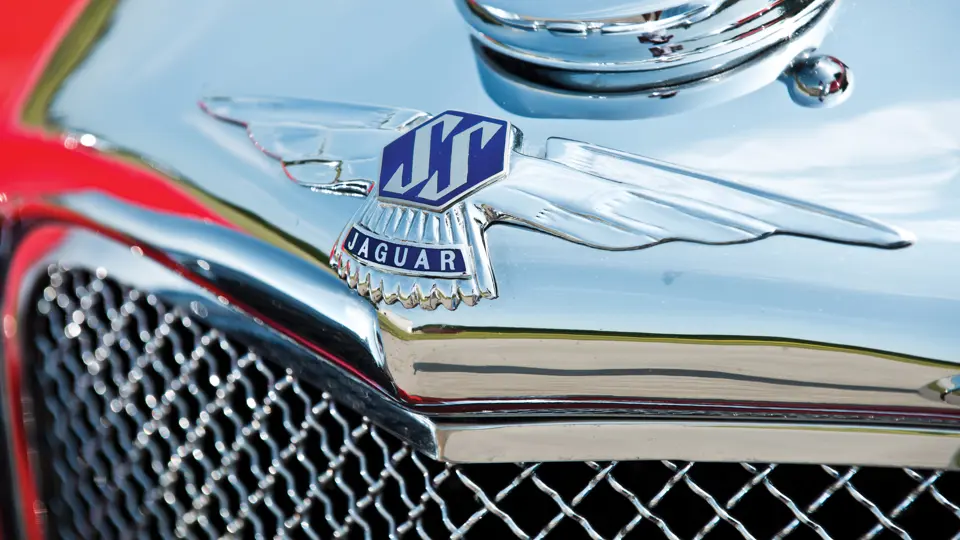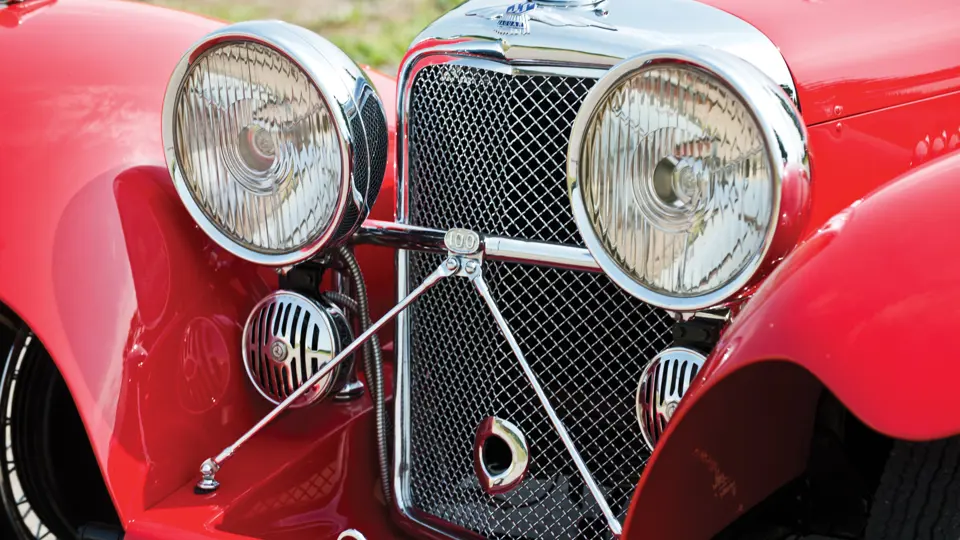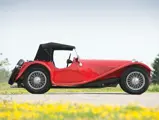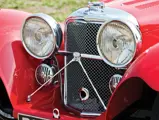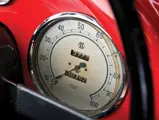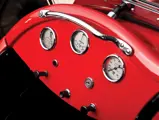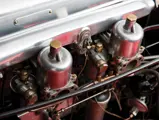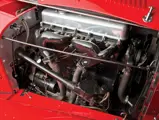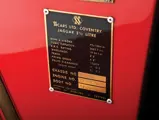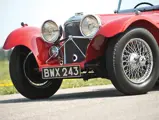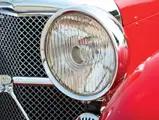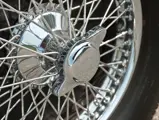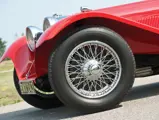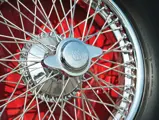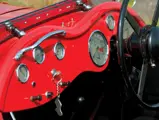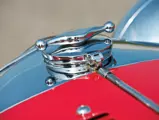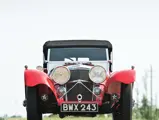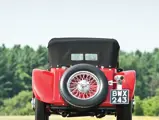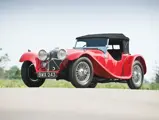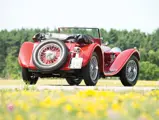125 hp, 3,485 cc OHV inline six-cylinder engine, dual SU carburetors, Moss four-speed manual gearbox, solid front and live rear axle with semi-elliptic leaf springs, and four-wheel mechanical drum brakes. Wheelbase: 104"
• One of only 308 SS100 roadsters built from 1936–1941
• Long-term ownership by noted marque enthusiasts Kathy and Jerry Nell
• National JCNA winner; 28 awards from 1986–2000
The company that would become Jaguar Cars Ltd. went through several iterations during its prewar development. The company started out as the Swallow Sidecar Company, literally building motorcycle sidecars. When partners William Walmsley and William Lyons began building bodies on the Austin 7, it became the Swallow Sidecar and Coachbuilding Company. Eventually the sidecar business was dropped altogether. Production of a new car in 1931, using a custom chassis from the Standard Motor Company, resulted in the SSI, and by 1934, the principle firm was called S.S. Cars Ltd. The SSII followed, and then the SS90, and finally, the SS100, built between 1937 and 1941.
Some 309 examples of the SS100 were built before the war ended production, and their influence today is nothing short of remarkable. Blessed with distinctively handsome styling and strong value for the money, clearly foreshadowing the firm’s future offerings, the SS100 “Jaguar” was one of the prewar era’s strongest and most capable performers. The 3.5-liter OHV engine, introduced in 1938, pushed the SS100 over the magic “ton,” and many cars were uprated from the original 2.5-liter to the later specifications, like this one.
The factory campaigned the SS100 hard in 1937 and 1938 at Goodwood, Brooklands, Donington Park, and Crystal Palace tracks and in hill climbs, especially Shelsley Wash and La Turbie in France. The new 3.5-liter engine was tested for high-speed reliability at Brooklands in October 1937. Tommy Wisdom lapped at 118 mph and averaged 111 mph to win the First October Long Handicap, with the engine running on methanol and producing 150 hp. After the war, Ian Appleyard enjoyed several successful seasons in the Alpine Rally and the Tulip Rally—in a 14-year-old car—before moving on to XK120s.
As that model replaced the SS100 in competition, surviving cars headed for retirement in America. This SS100 still carries its North Yorkshire license plate, BWX 243, and documents date back to the original owner, A.C. Crowther, of Harrogate, who bought it on April 13, 1937. It passed through two more UK owners, and following export to the USA, the car was owned by a Mr. Brown, of New Albany, Ohio, who corresponded regarding the car several times and contacted the Jaguar Works in Coventry, checking authenticity, inquiring about spares, and requesting a heritage certificate. Other owners included J.S. Volmer, of La Grange, Illinois, and George Stauffer, of Blue Mounds, Wisconsin.
Noted Illinois Jaguar collectors Kathy and Jerry Nell acquired chassis 18081 next. Mrs. Nell recalled that her husband Jerry drove the SS100 for about a year before he restored it in 1984, with the intention of showing the car. According to Kathy, Jerry was working the bugs out of the car when he first acquired it and was clocked on an interstate by the Highway Patrol at over 100 mph. “I’m going to take my radar back to the shop,” said the officer. “Cars this old don’t go that fast.” Mr. Nell did not get a ticket. The Nells competed in 28 JCNA concours events between 1986 and 2000, winning national class trophies in the process. The car also appeared at Meadow Brook in 1988, Pebble Beach in 1999, the CCCA Grand Classic, the Chicago International Concours, and Masterpieces of Style and Speed in 2008.
The current owner acquired the Jaguar from the Nells, and under his care, it was thoroughly checked and serviced, including the oil being changed from the motor, transmission, and differential. The radiator was also flushed, the chassis was completely lubricated, and the wheels and tires were dynamically balanced. In addition, a set of stainless-steel nut cups were made to complete the car’s soft top. The engine compression and carburetors were checked and found to be proper. The battery was replaced and connections were installed for preservation by a trickle charger. Handsomely presented, well-restored, and properly maintained, this SS100 will certainly form the cornerstone of any serious Jaguar collection.
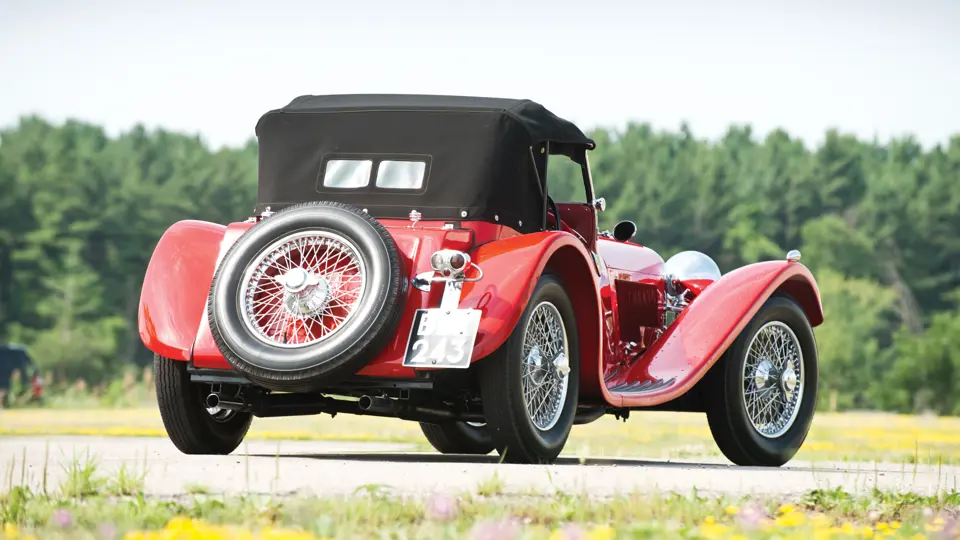



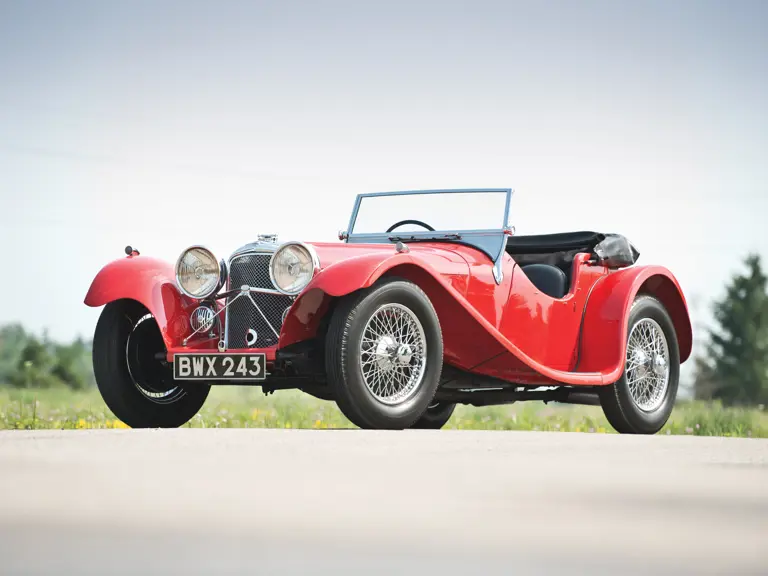
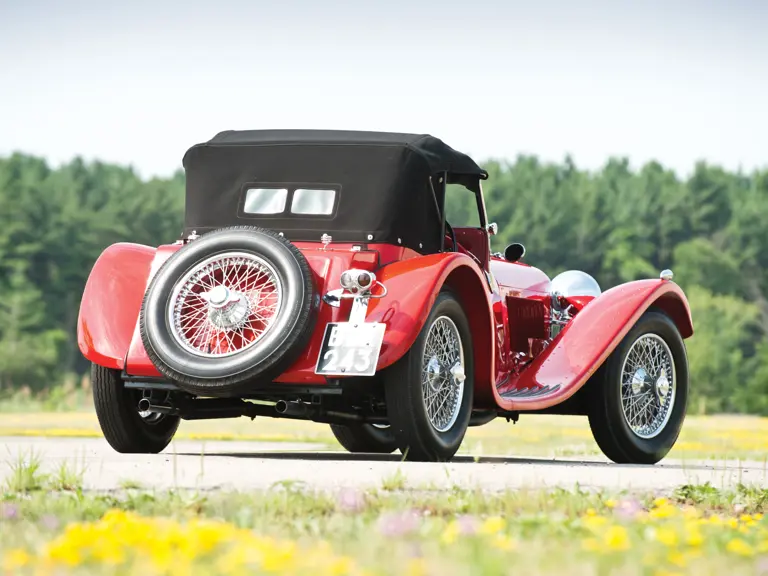
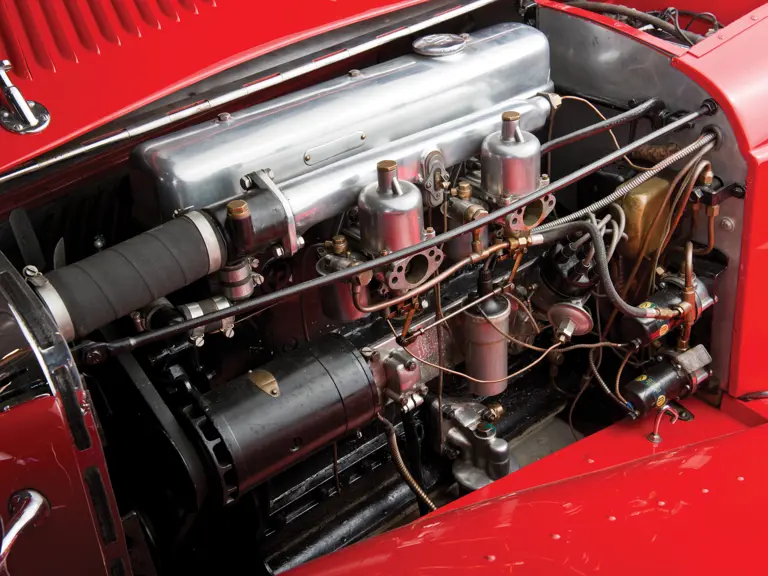

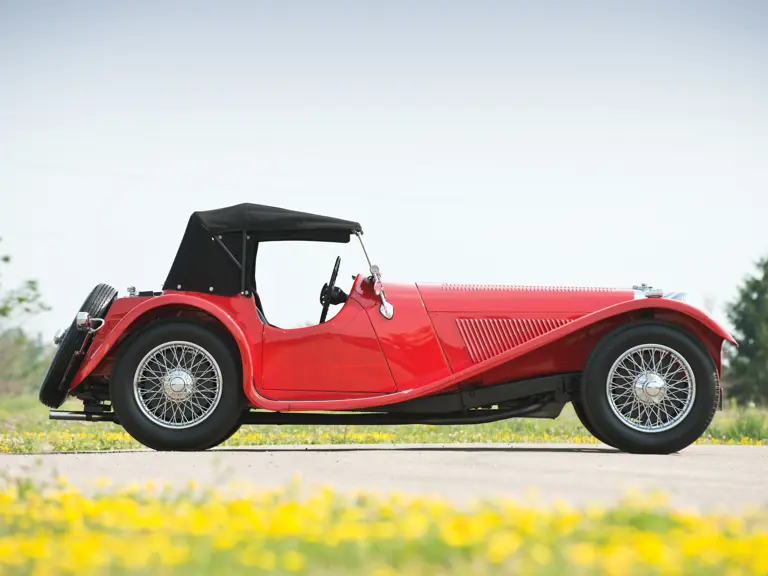
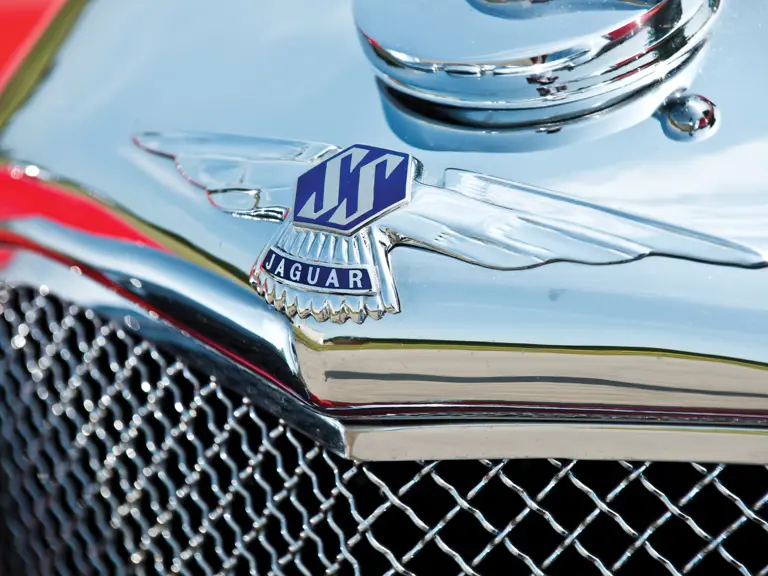
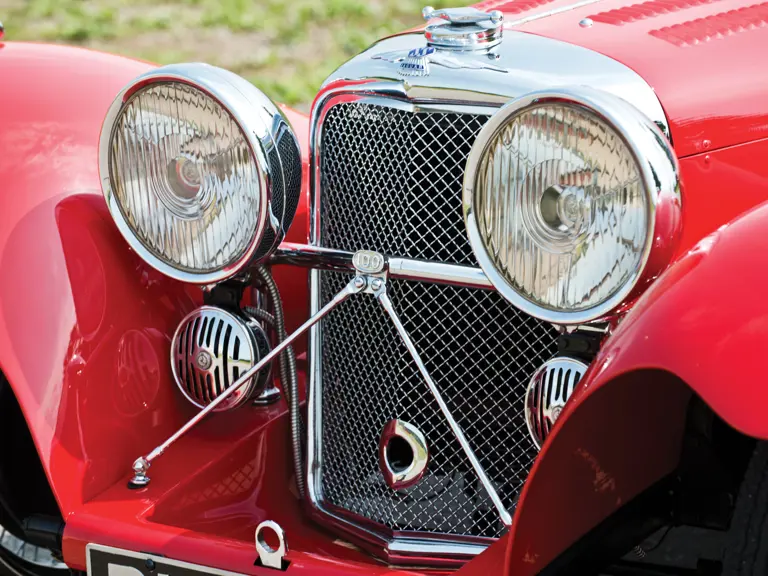


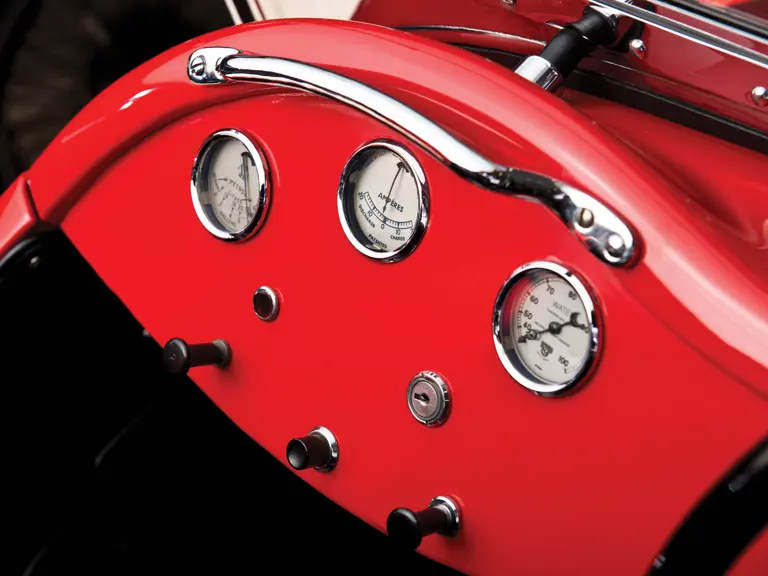

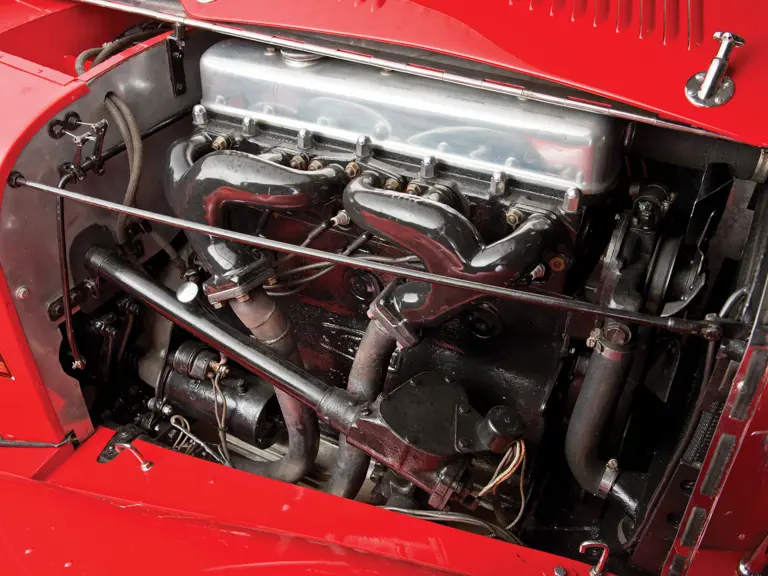

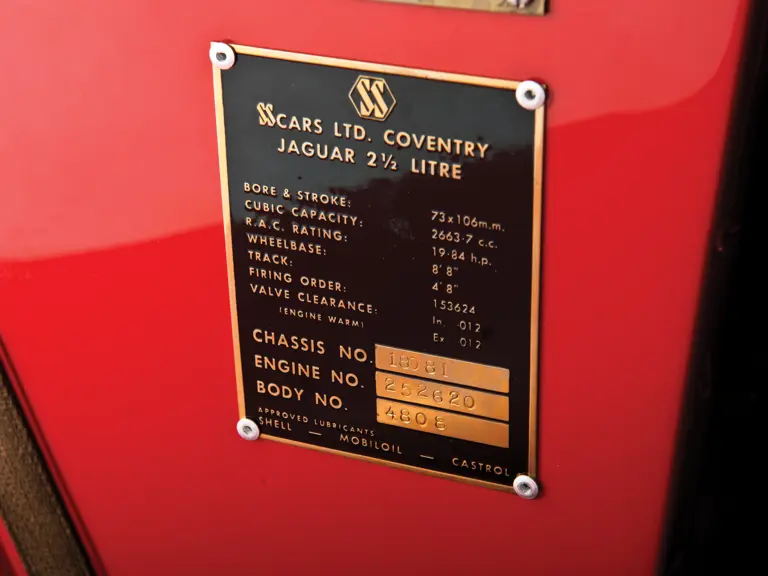
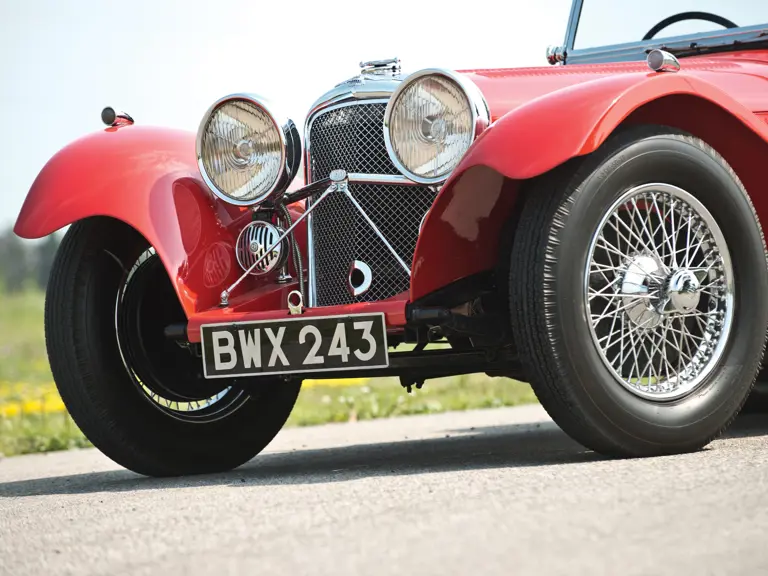

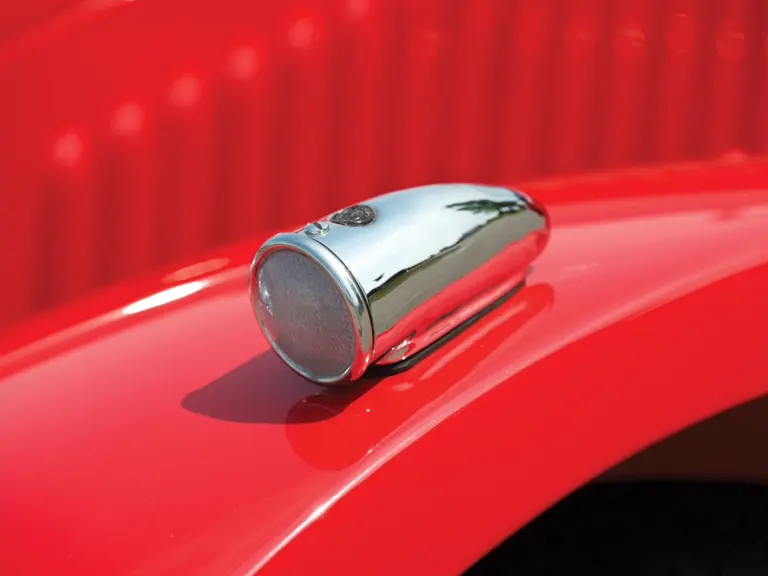

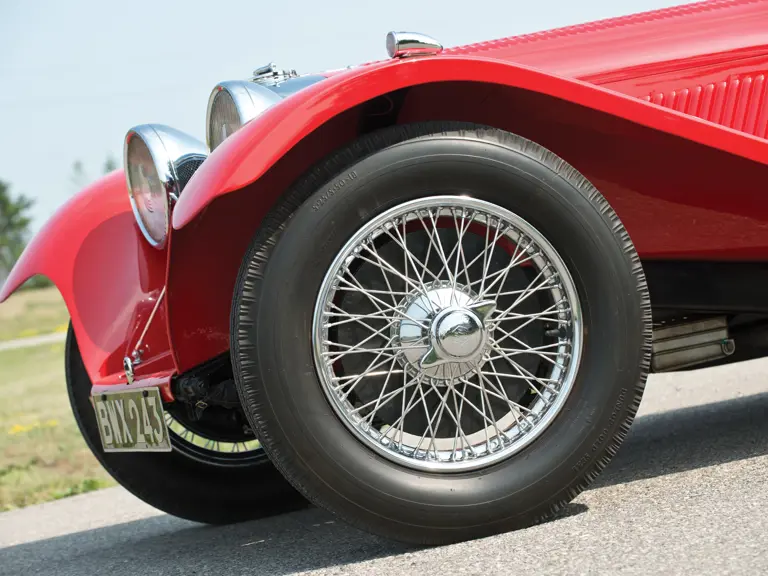
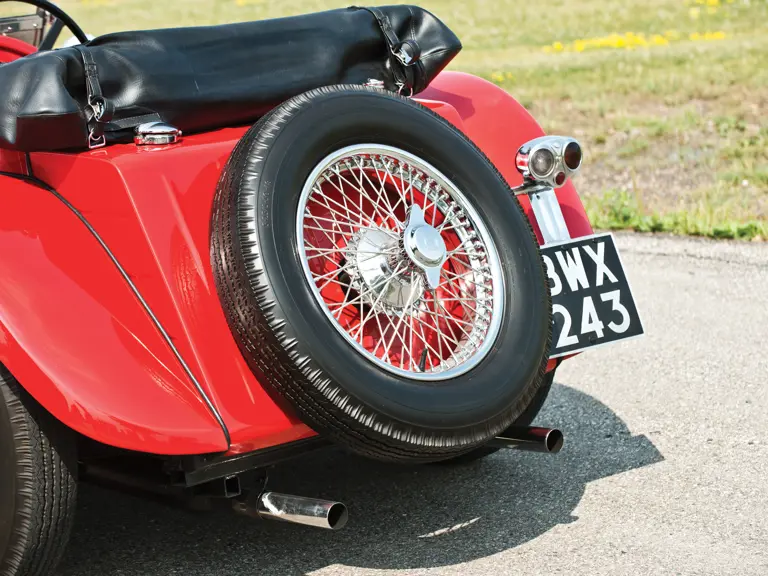

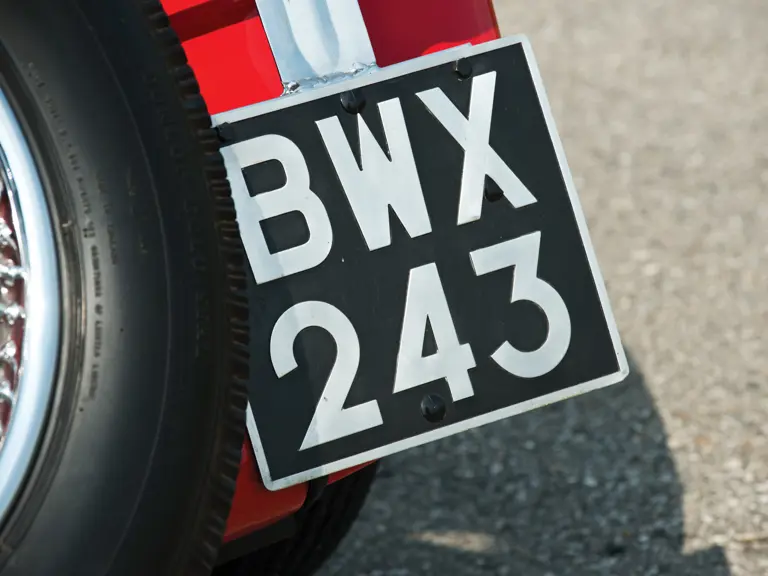
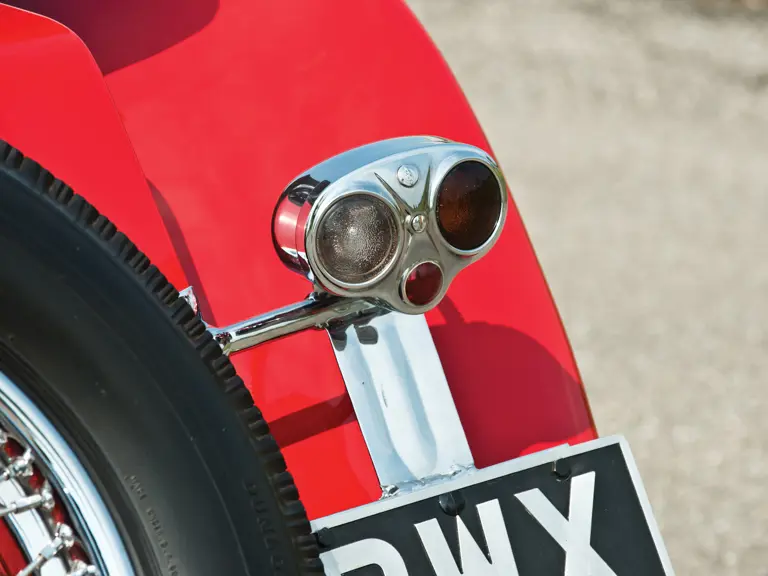
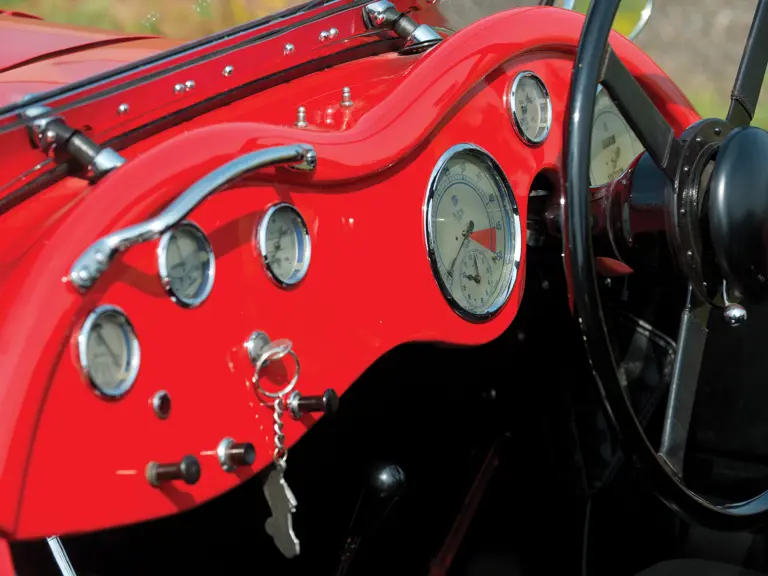
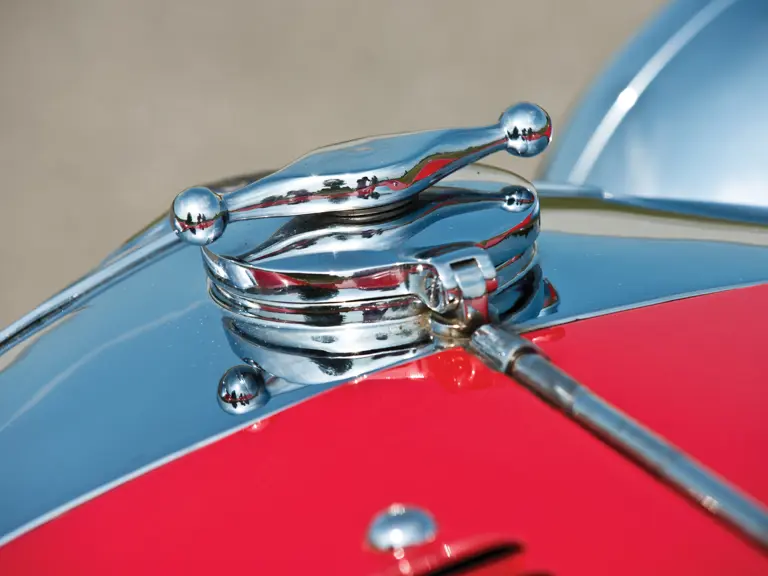
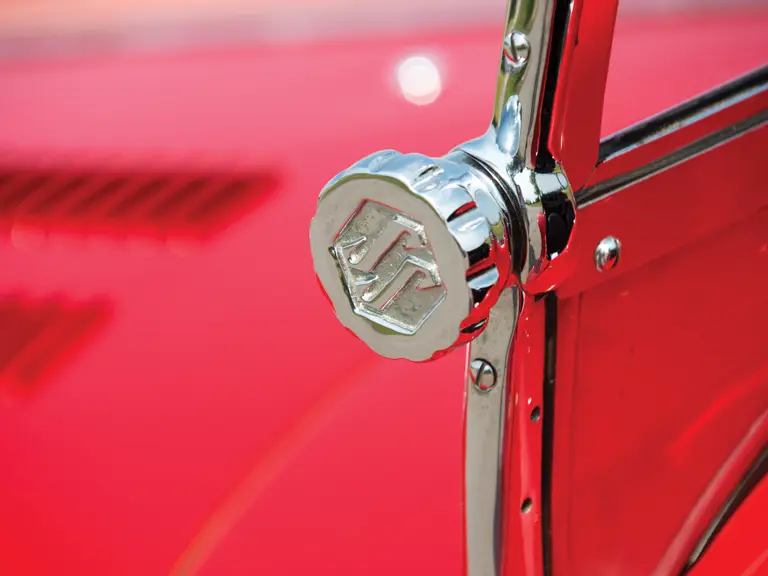
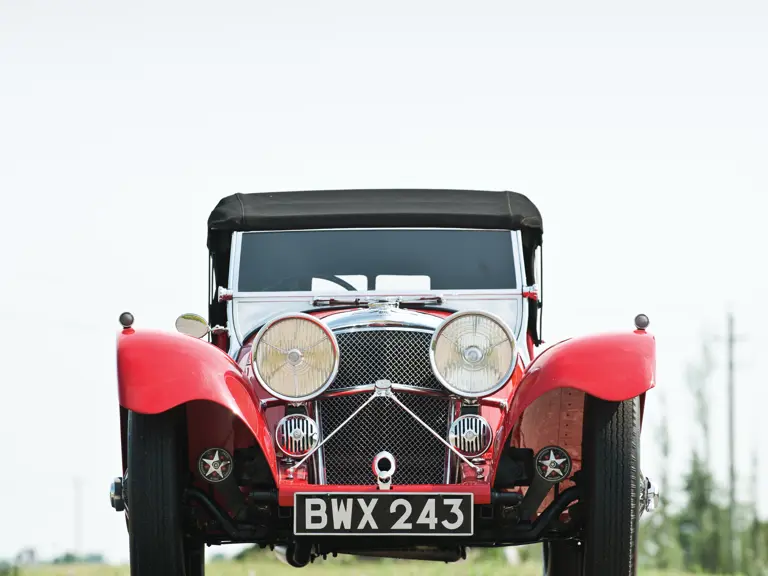
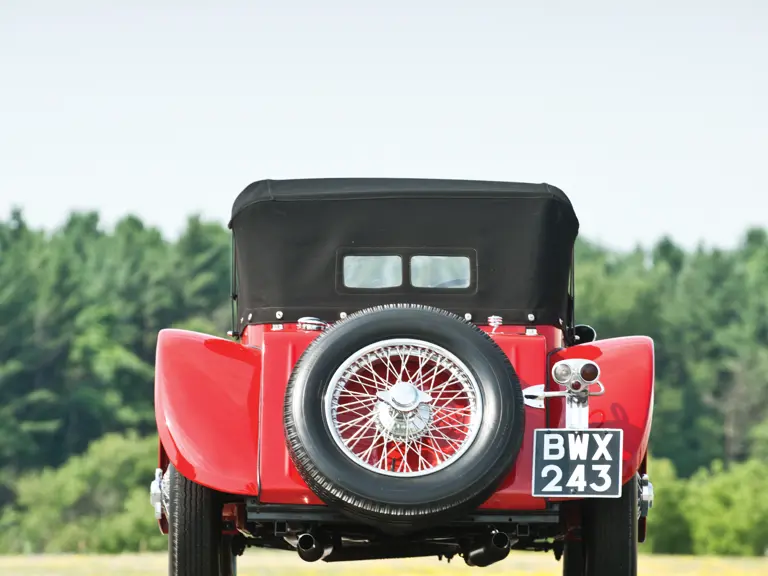

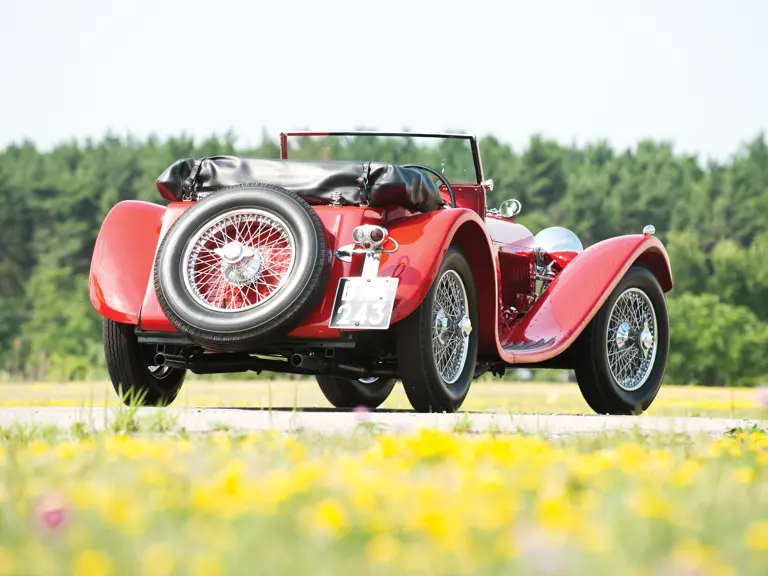
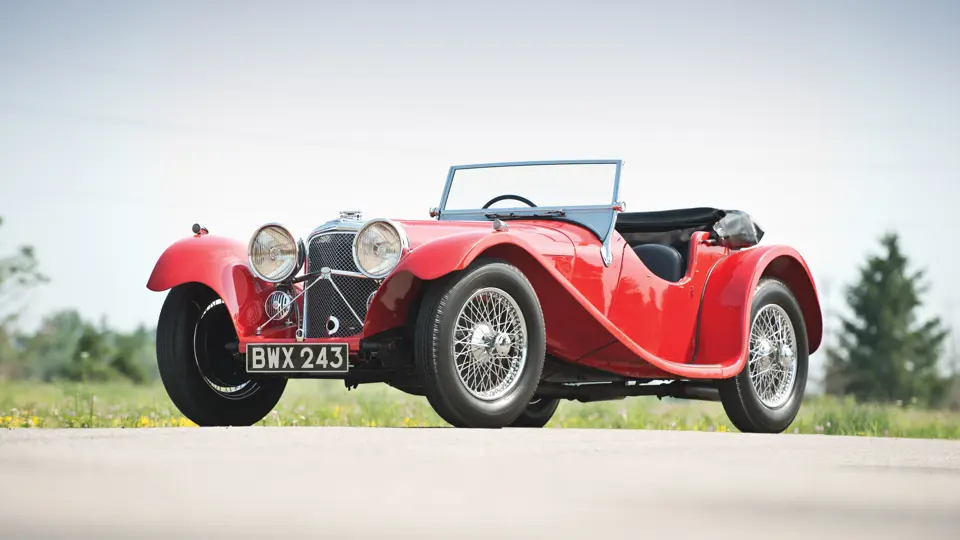
 | Monterey, California
| Monterey, California

